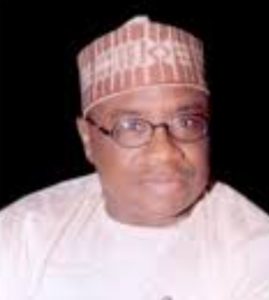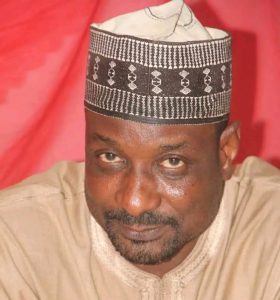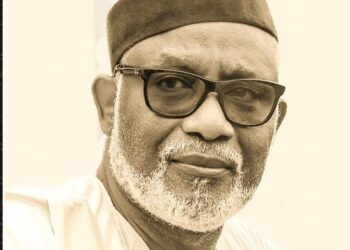
Noting all this lack of cohesion (what the industry called “rashin haɗin kai”) a meeting of all industry stakeholders throughout the north of Nigeria was convened by Alhaji Abdu Haro Mashi, CEO Damaga Motion Pictures, Katsina in 2000.
It was instructive that the meeting did not specifically insist on Hausa video film stakeholders—since there are other non-Hausa filmmakers in other languages, e.g., Nupe, Kanuri and Igala. Yet the meeting was basically a convocation of Hausa video filmmakers from Kano, Kaduna, Jos, Bauchi, Sokoto and others. It was held in Katsina on 21st October, 2000 at the Katsina Motel.
The main focus of the meeting was to create a common platform around which differences between all the producers would be sunk and a new working relationship created. There was a lot of urgings for all Hausa video film producers to be one (“tsintsiya maɗaurin ki ɗaya”). Perhaps not surprising for a group of dramatists, there was even a “curse” laid on any producer who subsequently deviated from this new atmosphere of cordiality and friendship created at the meeting.
At the end of the meeting a communiqué was issued that heralded a pan-northern Nigerian Arewa Film Producers Association of Nigeria (AFPAN), and which also appointed Hamisu Lamiɗo Iyan-Tama as the interim Chairman, pending a later meeting during which a substantive election will be held. A part of the communiqué included the following resolutions:
- That all associations formerly formed to represent the interest of film producers in the North are hereby merged to form Arewa Film Producers Association of Nigeria
- In the light of the above, we have resolved to sink our differences, forget and forgive ourselves and work committedly towards achieving our common goals
- We have resolved to improve the standard and quality of our production to match world standard through the application and use of modern facilities and techniques of film productions
- We have collectively resolved to take on the Federal Government on the issue of enforcement of local content on film/cinema exhibition
- We have resolved to form our ourselves code of practice aimed at improving professional relation between us, directors, artists and other stakeholders in the industry.
- We have resolved to look for ways and means of exhausting Arewa market and reaching out to other African markets and beyond. (Parts of the Communiqué, Arewa Film Producers Association, reproduced in Fim, November 2000 p. 34).
The meeting ended with the resolution of hold a follow-up meeting on 11th November 2000 in Katsina to flesh-out the Association and create a constitution for it. The focus of the Association was further refined after this second meeting in Katsina as indicated by parts of the second communiqué which read:
- That we all appreciated the gains and the unity achieved from establishing the association to date.
- That in view of the daily rising cost of production, we have resolved to increase the unit price of our films to be announced soon
- That the association is a professional body purely made up of producers only
- That we have resolved to dialogue with film exhibitors with a view to achieving a fifty-fifty percentage sharing formula. (Parts of the Communiqué, Arewa Film Producers Association, reproduced in Fim, December 2000 p. 47).
It was instructive that the two main gains of the Association were noted at this meeting—first was to increase the cost of the jacket of the video films, and second was the restriction of the membership of AFPAN to producers only. The first gain merely confirmed the market-driven nature of the Association for it did not provide more effective means of marketing the video films—instead, maintaining the same formula introduced in Kano in 1995—that of selling the “jacket” to marketers. The second gain was more significant in that by restricting the Association’s membership to producers only; artistes, singers, directors and most importantly, marketers were excluded. Yet almost all the delegated who constituted the AFPAN were actors, singers, directors in addition to being producers.

By 2001 the marketers—who had initially shunned the entire business in 1990—had realized its money-making potentials and the penury of the producers and filmmakers. They moved in full force such that Idris Ɗan Zariya the Chairman of El-Duniya Cassettes, and a major cassette marketer, entry into Kano State Filmmakers Association with the alleged intention of taking over the leadership of the organization. While this failed, nevertheless it created acrimony between not just Ɗan Zariya, but also other marketers, and a battle line was drawn—and this reflected itself in the decision of the AFPAN to restrict the membership only to producers.
This singular act was catalytic in further entrenching the market-driven nature of the Hausa video film industry. It was thus ironic that while the delegates at the 2nd Arewa Filmmakers Association were willing clients of marketers—or indeed anyone with money to make a film—they were not willing to sit at the same table with them. The producers I talked to in Kano in the period pointed out that while the marketers can produce films and can therefore consider themselves filmmakers, the producers are not marketers and cannot participate in any activity or decision of the marketers. Allowing marketers into the filmmakers’ associations was akin to bolting the door with a thief in—they will know the secrets of the filmmakers, but the filmmakers will never know their secrets. And in Kannywood, secrets are more precious than gold.
A third—and final—meeting of the Association was held on 5th May 2001 in Kaduna. At this meeting it was indicated only delegates from the various states were invited. Subsequently non-delegates, i.e. participants who attended either on verbal invitation or other means, were asked to leave the hall before the start of the business sessions. These included producers such as Ahmad Salihu Al-Kanawy (Fallasa, Aisha, Gashin Ƙuma), Sani Ayagi (An Ci Moriyar Ganga), Zainab Kanye (Uwata), and Alhassan Kwale (Mujaza, Habiullah); and artistes such as Shehu Hassan Kano and Tahir Fage, and Idris Ɗan Zariya who was a marketer as well as a producer (and at one stage, even an actor), and representing Kano State Cassette Dealers Association.
By excluding artistes from the meeting, the Arewa Filmmakers Association merely increased the divided between all the stakeholders in the industry. This was because most of the producers were artistes and thus members of artiste organizations. This means the producers have a double leverage on the artistes because they can sit on artistes’ meetings (as actors), but the artistes cannot sit on theirs (unless the actors became producers, which many of them opted to become to participate in all aspects of the “industiri”).
Yet the producers rely on the artistes for their production. As a result of this exclusion of Ɗan Zariya—ostensibly to prevent him from reporting the expected increase in the cost of the jackets to the marketers—the marketers in Kano decided to boycott all the video films by Hamisu Lamiɗo Iyantama by the virtue of his being the Chairman of the Arewa Filmmakers Association—on the belief that he sanctioned the decision to exclude Ɗan Zariya who was their representative. Although no communiqué was issued after this meeting, the main decision taken was that producers will increase the cost of Hausa video film jacket from N40 to N50 almost immediately due to rising costs of production, and the observation that the marketers themselves had increased the retail cost of video tapes from ₦180 to ₦220.
The tension between the filmmakers and marketers was brought to the fore on 19th May 2001 when members of the KSFMA marched to the marketers’ shops in Kano and forced an increase of ₦10 (from ₦40 to ₦50) on the cost of each video film jacket. The marketers unsuccessfully resisted this on the grounds that they had not been formally informed of the decision to increase the cost of the jackets, and that they also needed to meet at an organizational level to negotiate the new price regime.
However, two producers, Maryam “Mashahama” Ɗanfulani (Ajali) and Salisu Yomen (Annashuwa) defied this decision and released their films to the marketers at the old price of ₦40. This led to their suspension from the KSFMA. Interestingly, such suspension also included banning them from appearing as artistes in any Hausa video film—a stand which the Artistes’ Council took an exception to as it affected Ɗanfulani because as far as they were concerned her being a producer (as well as an actor, and a singer)—and the attendant problems she faced with producers—does not affect her as an actor!
This merely served to reveal the contradictions in the organized attempt to sustain Hausa video film industry. This was more so because Shehu Hassan Kano, the Chairman of the Artistes’ Guild was unceremoniously thrown out of the Arewa Filmmakers meeting in Kaduna on 5th May 2001 on the grounds of not being a delegate—even though the was representing Kano State Guild of Artistes—and also as an artiste, not producer—even though he had formal invitation.
By 1999 the Hausa video film, despite being in existence for almost a decade, was still in its commercial infancy. The direct cause of this was that the entire system lacked organized professionalism right from its inception, nor were the practitioners—unlike the non-professional video film moguls from southern Nigeria—ready to consult with the professionals on the development of the industry.
It only got more commercial in October 1999 with the release of the most successful Hausa film of the decade: Sangaya.
* Abdalla Uba Adamu is a double-Professor (of Science Education, and Media Studies) at Bayero University, Kano. He is a former Vice-Chancellor of the National Open University of Nigeria (NOUN)




